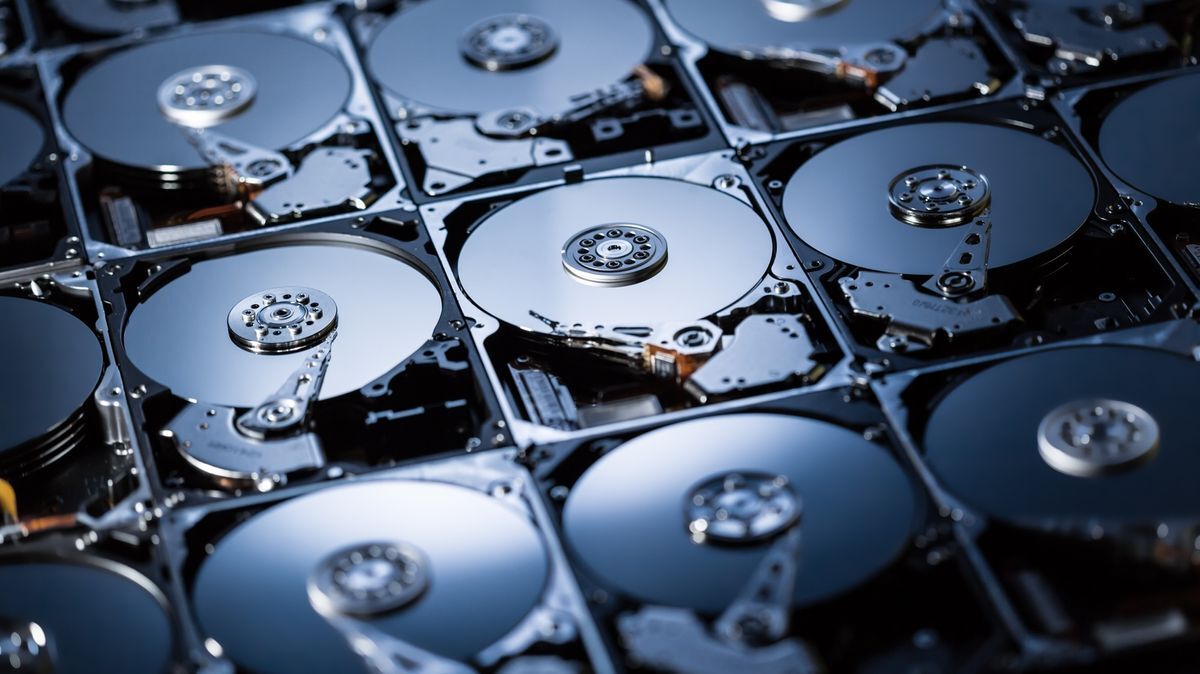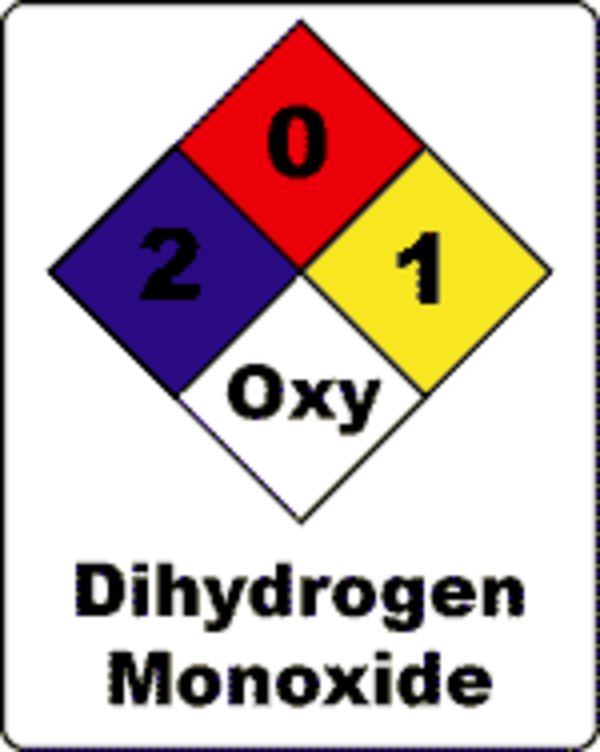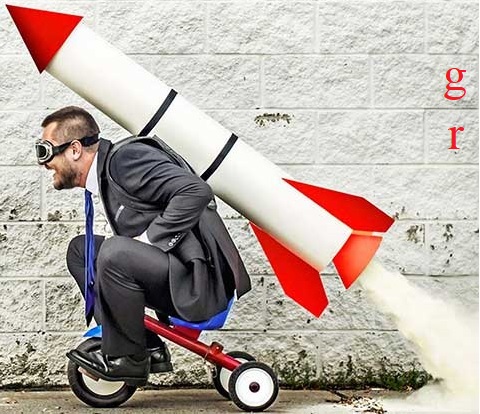Yes. SSDs are still excellent for small form factor and speed, but for long term reliable storage in massive volumes, old fasion hard drives are only second to tape storage.
Source: I am in charge of four 1.2PB storage clusters, each consisting of 144 10TB Toshiba drives. The systems write their output to 10TB tapes for data delivery.
Person with vested interest in X says X will continue to proliferate. More at 11
Also, for some extra context:
Stupid elon
We’ve done this exercise recently for multi-petabyte enterprise storage systems.
Not going to name brands, but in both cases this is usable (after RAID and hot spares) capacity, in a high-availability (multi-controller / cluster) system, including vendor support and power/cooling costs, but (because we run our own datacenter) not counting a $/RU cost as a company in a colo would be paying:
- HDD: ~60TiB/RU, ~150W/RU, ~USD$ 30-35/TB/year
- Flash: ~250TiB/RU, ~500W/RU, ~USD$ 45-50/TB/year
Note that the total power consumption for ~3.5PB of HDD vs ~5PB of flash is within spitting distance, but the flash system occupies a third of the total rack space doing it.
As this is comparing to QLC flash, the overall system performance (measured in Gbps/TB) is also quite similar, although - despite the QLC - the flash does still have a latency advantage (moreso on reads than writes).
So yeah, no. At <1.5× the per-TB cost for a usable system - the cost of one HDD vs one SSD is quite immaterial here - and at >4× the TB-per-RU density, you’d have to have a really good reason to keep buying HDDs. If lowest-possible-price is that reason, then sure.
Reliability is probably higher too, with >300 HDDs to build that system you’re going to expect a few failures.
Factoring in the current year inital cost and MBTF, did you figure out an ROI on HDD vs Flash including Power and space?
Not in so much detail, but it’s also really hard to define unless you’ve one specific metric you’re trying to hit.
Aside from the included power/cooling costs, we’re not (overly) constrained by space in our own datacentre so there’s no strict requirement for minimising the physical space other than for our own gratification. With HDD capacities steadily rising, as older systems are retired the total possible storage space increases accordingly…
The performance of the disk system when adequately provisioned with RAM and SSD cache is honestly pretty good too, and assuming the cache tiers are adequate to hold the working set across the entire storage fleet (you could never have just one multi-petabyte system) the abysmal performance of HDDs really doesn’t come into it (filesystems like ZFS coalesce random writes into periodic sequential writes, and sequential performance is… adequate).
Not mentioned too is the support costs - which typically start in the range of 10-15% of the hardware price per year - do eventually have an upward curve. For one brand we use, the per-terabyte cost bottoms out at 7 years of ownership then starts to increase again as yearly support costs for older hardware also rise. But you always have the option to pay the inflated price and keep it, if you’re not ready to replace.
And again with the QLC, you’re paying for density more than you are for performance. On every fair metric you can imagine aside from the TB/RU density - latency, throughput/capacity, capacity/watt, capacity/dollar - there are a few tens of percent in it at most.
Most super computer systems have been doing away with hhds for the speed and energy efficiency causing ssds and tape to be the two forms of storage.
Being in an HPC-adjacent field, can confirm.
Looking forward to LTO10, which ought to be not far away.
The majority of what we’ve got our eye on for FY '24 are SSD systems, and I expect in '25 it’ll be everything.
I bought 18 TB seagate exos x18 drives for about $400 AUD each this year. What price are 18TB SSDs at?
Around AUD $4500
Mr Toshiba needs to fix his numbers!
Haven’t hard drives been cheaper per storage amount than SSDs forever? The problem was always that they were slow. I think tape may still be cheaper per storage amount than hard drives, but the speed is abysmal.
Edit: yeah looks like tape is 3x to 4x cheaper than hard drives https://corodata.com/tape-backups-still-used-today
For me, reliability is now the bottleneck.
So many HDs are crapping out after about 5 years. Not saying SSDs are better, but I haven’t used any for storage. But it’s starting to feel like a subscription plan as I’m rotating hard drives in my server nearly every year now since 2018.
That seems high. Data center drives have a failure rate around 1% per year, even for the worst manufacturer. Not sure how many drives you have or what your workload is like.
Tapes themselves are cheaper but there’s also the upfront cost of the tape drive (we’re talking thousands).
And that there is the real crime. It’s a real shame no one’s making a tape drive at the consumer market price point. Tapes are a hell of a lot more convenient for backups and archival than the giant weird pile of storage formats we’ve seen over years.
The average consumer can make do with Blu Ray.
Agreed and was looking for this comment.
The medium is cheap but the device to read/write is pricy.
There’s not much price difference between SSDs and hard drives that are 1 TB or less. Larger than that, hard drives are still much cheaper.
Wendel from level 1 techs really likes the multi actuator spinning rust drives. You still wouldn’t use them for a boot drive, but they’re fast enough to saturate a sata connection, while still being much more dense than ssds. They can achieve 500MB/s sequential speeds, so they’re plenty fast for large file access. Most consumers should be using SSD’s but if you’re dealing with more than a couple terabytes, the best solution isn’t as straightforward.
I’d love to see what could be done with current tape storage technology in standard compact cassette format.
There’s some space occupied by the servo tracks (which align the heads to the tap) in LTO, but if we ignore that…
Current-generation LTO9 has 1035m of 12.65mm wide tape, for 18TB of storage. That’s approximately 13.1m², or just under 1.4TB/m².
A 90 minute audio cassette has around 90m of 6.4mm wide tape, or 0.576m². At the same density it could potentially hold 825GB.
DDS (which was data tape in a similar form factor) achieved 160GB in 2009, although there’s a lot more tape in one of those cartridges (153m).
Honestly, you’d be better off using the LTO. Because they’re single-reel cartridges (the 2nd is inside the drive), they can pack a lot more tape into the same volume.
My 8TB Seagate failed a week ago and I was looking into new drives. The cheapest HDD was around 25 EUR per TB (for the 18TB ones) and the cheapest SSD were under 50 EUR per TB. No idea where this “7 times cheaper” comes, maybe from 2015.
I ended up buying a 4TB Crucial MX500 with 4TB for 208 EUR (barely enough for my data, but with some cleanup it will hold a year for sure).
Not only it’s faster, it’s smaller (fits in the NUC), it’s quieter and it consumes much less electricity. I don’t think I will ever buy an HDD ever again. Maybe for surveillance recording?
Hamr drives and for data center use. Consumer ssds are made very poorly and even premium drives like a Samsung pro won’t hold up in a data center environment. Hard drives on the other hand are basically only data center versions now.
No idea where this “7 times cheaper” comes
Probably from back when Toshiba was relevant
They ain’t called Seabricks for nothing. SSD will let you sleep at night.
There is a substantial difference indeed, now the setup is basically silent (I don’t load the CPU enough for the fan to kick in).
You compared cheapest by cheapest, however items cost is more efficient with larger sizes
If you compare the best GB per $ sizes of both media types it is likely going to much more apart.
I compared cheapest per TB. The HDDs were most efficient at 18TB, the SSDs at 2 or 4 TB.
Oh I see. I need better reading comprehension.
When I do the same calculation I come up with HDD being 4.5x cheaper per TB.
$200 for a refurbished 20TB drive on Newegg
The new ones were on sale for $270 so around $10-15 per TB. The best I can find is $40-50 per TB for SSD. Certainly not 7times more expensive but more like 3-5.
Yea, you can’t compare consumer to business. Very different. Article is talking about datacenters, which don’t typically rely on consumer grade products.
Maybe regional differences. I’ve been looking for 3 days last week and have found anything under 20 EUR per TB, more like 25 for non-sketchy sites. For new drives, I’d never buy a refurbished again. SSDs are similarly priced, around 50 per TB for brand named ones.
Not that many 18TB SSDs available though. Might (and probably will) change in the future, but today, if you want massive amounts of storage, HDDs are your only reasonable solution (ignoring magnetic tape) unless you really require the read & write speeds of an SSD. Imagine Backblaze trying to replace their 46000 16TB HDDs with a few hundred thousand smaller SSDs in their datacenter.
I admin a datacenter and hard drives are never going anywhere. Same with tapes.
I work tech support for a NAS company and the ratio of HDDs to SSDs is roughly 85-15. Sometimes people use SSDs for stuff that requires low latency, but most commonly they’re used as a cache for HDDs in my experience.
Not much point in using SSDs in a NAS if it’s there just for holding your files
If the NAS supports tiered storage, you benefit from high I/O performance for things like video editing.
My home storage is a NAS connected over 10GbE, I never bothered trying to play games off of it, but I’ll bet they’d run great. Read & write over the network at 10 gigabit is faster on a machine with (separate) RAID arrays of SSDs and HDDs than internal SATA3 connectivity which is kind of bonkers for a home user. Plus that has virtual machines and cloud backups running on the NAS side.
Work for one of the largest and we literally finished phasing out tape this year lol.
In favor of what? Spinning rust, or some other media for archival backups?
deleted by creator
Power consumption, noise, durability…
There is a lot of power to waste for the savings you made, when not buying expensive SSDs (20€ a year is not much). Where we use HDDs, we don’t care about noise. Durability? We use huge RAID systems with lots of redundancy.
I personally like to swap new drives after 5 years to avoid failures. So when you find a 16 TB SSD for 350€, you send me a message.
My 4 bay HDD NAS uses around 45W, 50W with some light load, 70W spinning up. That’s about 1kWh per day, or 150 EUR per year.
I use it in my room, so I very much care about noise.
More durability = less redundancy (less cost) + less frequent swaps (less cost). My anecdotal evidence is 1 failed SSD in 15 years (160GB Intel, basically first Gen). Every other SSD is still working. I have a drawer full of failed HDDs.
Plus more performance.
I have my own nas in my living room too and it’s super rare that I hear the disks over the fans.
Geez power is expensive for you folks.
In Vancouver we pay 0.14 CAD per kWh (.096 EUR) for usage beyond 675kWh in a month. (0.0975CAD, 0.068 EUR, before the threshold)
My HDDs run 24/7 without spin up btw. I’m just talking about the costs. My drives don’t fail that much as yours. The recent drives that failed were WD Blue that were very old and only used for backups. And yes, all backups were still readable, even the drive was reported as failed. Compare it to SSDs that often fail “spectacularly”.
deleted by creator
deleted by creator
This is my thing. I have about 122TB of spinning metal (with the same as an offsite backup) with SSDs as ZIL and L2ARC. And it’s awesome. HDDs I think will genuinely be important for for the foreseeable future.
As a newb I hope one day in my journey, I can look back at this and say “I finally understand this.” Til then thank you, magic man
deleted by creator
deleted by creator
I just bought a microcenter brand 1 TB SSD for less than $50. Can a HDD compete with that on price and read/write speed?
Also recently bought a gaming PC that does not have a HD, only a 1 TB SSD.
I think HDDs day as boot drives is over. Unless they get a lot faster which I think is unlikely.
HDDs are certainly useful for larger amounts of storage, though. Self hosting, data centers, etc.
ETA: I don’t think any of the responses read my entire comment. See the LAST SENTENCE in particular, friends.
Use HDDs for linear read/write (files) and SSDs for IOPS (databases)
Toshiba’s estimates feel reasonable. While the price difference is slowly narrowing compared to the widening performance and form factor gap, it’ll certainly continue to be a slow death. The current price ratio would need to be inverted before it makes sense to drop hdds entirely. And even then tapes will still be around forever.
With investments in storage tech being so diverted away from HDD technologies I wonder how much further capacity will get. We’re already at the point where disks have many platters and HAMR is finally going to be delivered after decades of “coming soon”. It feels like, much akin to processor fab, we’re approaching a wall.
Besides speed, the main problem of spinning rust hard drive ultimately comes down to reliability: you have to baby them, one bad shock and the magnetic needle scratches the platter, then all your data is gone without any way to recover them.
Datacenters usually have redundancies just in case, but being that NAND flash is dirt cheap nowadays, the flaws of spinning rust hard drives are too great to overcome.
Why would running datacentre drives experience a bad shock?
Earthquakes?
Considering that the needle hovers like mere nanometers over the disk, something as simple as loud noises would cause enough vibration to affect disk performance, so the force needed to permanently damage a disk is really, really small.
I always love seeing that video in the wild, but vibrations affecting performance and vibrations causing damage are two entirely different things, particularly because that performance drop might be the needle parking itself to avoid actual damage.
As a personal anecdote, I’ve once installed Windows on a laptop while sitting in the back row of a car driving on not-so-great roads and while I wouldn’t recommend it, the laptop was still good years later.
Speaking of, the entire concept of laptops wouldn’t have worked before SSDs became mainstream if HDDs were actually that fragile.
I’ve once installed Windows
Oh no, you’ve said the forbidden words on Lemmy! I can hear them coming now…
“Burn the heretic!”
*pointing and laughing
“I use arch, btw”
Well, this took place more than a decade ago, probably even before the above video was made, and I am actually using Arch right now. Still have a Win11 partition though. And another PC with Ubuntu, just to make everyone mad.
“I use arch, btw”
Nah, I use Fedora m’lady.















